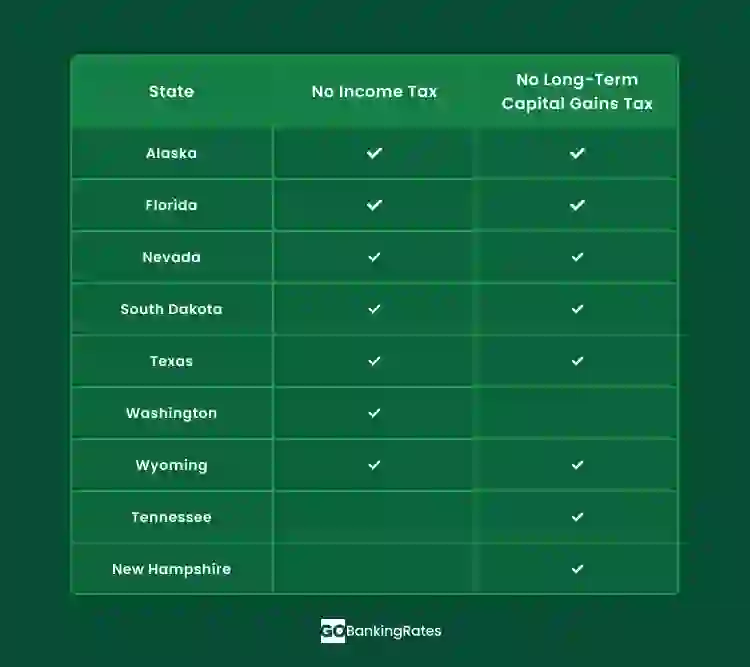Qualified and Nonqualified Dividend Tax Rates for 2024-2025

Commitment to Our Readers
GOBankingRates' editorial team is committed to bringing you unbiased reviews and information. We use data-driven methodologies to evaluate financial products and services - our reviews and ratings are not influenced by advertisers. You can read more about our editorial guidelines and our products and services review methodology.

20 Years
Helping You Live Richer

Reviewed
by Experts

Trusted by
Millions of Readers
Dividends represent a share of the income of the company, therefore they are taxable to shareholders who receive them. How they’re taxed depends on if they’re considered ordinary or qualified.
Here’s what you should know about any taxes you might owe on your dividend payments. As with many aspects of personal federal income taxes or ordinary income tax rates, the answer depends on several factors.
Types of Dividends and How They Are Taxed
Qualified dividends are taxed at a different rate than regular dividends. You won’t have to guess how your dividends are being taxed. The IRS will record it on your 1099-DIV.
Qualified Dividends
A dividend becomes qualified based on how long you hold onto it. To understand this time period, you must understand the ex-dividend date. The ex-dividend date is the day you must own the security in order to collect the dividends for that month or quarter.
- You must have held the investment in an unhedged state for at least 61 days of the 121-day period that began 60 days before the security’s ex-dividend date.
- For certain preferred stocks, that holding period increases to at least 91 days out of the 181-day period that began 90 days before the stock’s ex-dividend date.
Qualified dividend status can save you a lot of money because you’ll only pay the long-term capital gains rate on those payouts. That rate is 0%, 15% or 20%.
Ordinary Dividends
Ordinary dividends are any type of dividend you receive that doesn’t meet the above definition. You’ll pay the regular income tax rate on these dividends. That goes up to 37% based on your other income.
Generally speaking, if you hold a stock for less than a couple of months, you might end up paying more tax on the dividends you receive, as you will be transforming those dividends from qualified to ordinary.
Where Qualified Dividends Originated
Before 2003, all dividends issued by companies were taxed as ordinary income, meaning you’d pay the same tax rate on them as if you were receiving your salary or wages.
Taxes on Dividends
Your dividends are taxable even if you roll the money back into the investment.
You should receive a Form 1099-DIV, Dividends and Distributions from any organization or company that pays you dividends of more than $10 for the year.
- Box 1a lists the amount of ordinary dividends
- Box 1b lists the amount of qualified dividends
If you are unsure how to claim your dividends as income, you may want to consult with a tax professional.
2024 Dividend Tax Rates
The qualified dividend tax rate for tax year 2024 — filing in 2025– is either 0%, 15% or 20%. These rates are influenced by your tax bracket, which is determined by your filing status and taxable income for the year.
Qualified Dividend Tax Rate
Here’s how the tax brackets play a pivotal role in determining the rate at which your qualified dividends are taxed:
| Filing Status | 2024 Income Bracket | 2025 Income Bracket | Tax Rate |
|---|---|---|---|
| Single | $0 to $44,625 | $0 to $48,350 | 0% |
| $44,626 to $492,300 | $48,351 to $533,400 | 15% | |
| $492,301 or more | $533,401 or more | 20% | |
| Head of Household | $0 to $59,750 | $0 to $64,750 | 0% |
| $59,751 to $523,050 | $64,751 to $566,700 | 15% | |
| $523,051 or more | $566,701 or more | 20% | |
| Married Filing Jointly | $0 to $89,250 | $0 to $96,700 | 0% |
| $89,251 to $553,850 | $96,701 to $600,050 | 15% | |
| $553,851 or more | $600,051 or more | 20% | |
| Married Filing Separately | $0 to $44,625 | $0 to $48,350 | 0% |
| $44,626 to $276,900 | $48,351 to $300,000 | 15% | |
| $276,901 or more | $300,001 or more | 20% |
Net Investment Income Tax
Additionally, qualified dividends in 2024 might also be subject to the NIIT of 3.8%. This extra tax applies if your modified adjusted gross income exceeds certain thresholds:
- $200,000 for single or head of household filers
- $250,000 for married filing jointly or qualifying widow(er)s
- $125,000 for married individuals filing separately
Why Are Qualified Dividends Taxed at a Lower Rate?
When dividends were taxed at a higher rate, companies had more incentive to not pay them and instead keep the cash or use it for stock buybacks.
Lowering the dividend tax rate for qualified dividends offered companies an incentive to pay dividends and put those funds back into the market.
Ordinary Dividends Tax Rate
For nonqualified (or ordinary) dividends, you’ll pay tax at your ordinary income rate. For 2024, these are the brackets:
| Tax Rate | Single Filers | Joint Filers | Heads of Households |
|---|---|---|---|
| 10% | $0 to $11,600 | $0 to $23,200 | $0 to $16,550 |
| 12% | $11,601 to $47,150 | $23,201 to $94,300 | $16,551 to $63,100 |
| 22% | $47,151 to $100,525 | $94,301 to $201,050 | $63,101 to $100,500 |
| 24% | $100,526 to $191,950 | $201,051 to $383,900 | $100,501 to $191,950 |
| 32% | $191,951 to $243,725 | $383,901 to $487,450 | $191,951 to $243,700 |
| 35% | $243,726 to $609,350 | $487,451 to $731,200 | $243,701 to $609,350 |
| 37% | $609,351 or more | $731,201 or more | $609,351 or more |
State Taxes on Dividends
Not all states tax ordinary income, and not all tax long-term capital gains either. But if you live in a state that does, you should prepare to pay the appropriate taxes at the state level as well.

As tax laws change frequently, always check with your state for the final word on dividend and capital gain taxation.
Impact of Dividend Taxes on Your Investment Strategy
Here are some tips to consider:
1. Choose Qualified Dividends When Possible
An investor in the top tax bracket, for instance, faces a top federal tax rate of 37% on nonqualified dividends but just 20% on qualified ones. That can translate to thousands of dollars of savings per year just by selecting qualified dividends only.
2. Fund Tax-Advantaged Accounts
Another option to consider is putting all of your dividend income into a tax-advantaged account like a 401(k) or IRA. This way, taxes are completely deferred until withdrawn. In the case of a Roth IRA or Roth 401(k), those dividends can be 100% tax-free.
3. Use Tax-Loss Harvesting
Tax-loss harvesting is an additional strategy that can help reduce your dividend taxes. If you have any capital losses in a given year, you can use them to offset both your capital gains and up to $3,000 of ordinary income, including dividend income.
The Bottom Line
Before you file your taxes, you will want to make sure that you understand how your dividends will be taxed.
- Gather all of your tax documents.
- Report capital gains and dividend income — and losses — on Form 1040.
- If you claim more than $1,500 in taxable dividends, you will also have to file Schedule B (Form 1040).
If you have any questions, you should make an appointment with a tax professional who can help you maximize your deductions to minimize your tax liability on your tax return.
John Csiszar and Caitlyn Moorhead contributed to the reporting for this article.
Our in-house research team and on-site financial experts work together to create content that’s accurate, impartial, and up to date. We fact-check every single statistic, quote and fact using trusted primary resources to make sure the information we provide is correct. You can learn more about GOBankingRates’ processes and standards in our editorial policy.
- TurboTax. 2024. "Is There a Dividend Tax? Your Guide to Taxes on Dividends."
- IRS. 2024. "Topic No. 559 Net Investment Income Tax."
- IRS. 2024. "Topic No. 404 Dividends."
- IRS. 2024. "Publication 550 (2021), Investment Income and Expenses."
- Fidelity. "Qualified dividends."
- IRS. 2024. "Topic No. 409 Capital Gains and Losses."
- IRS. 2024. "About Schedule B (Form 1040), Interest and Ordinary Dividends."
- Intuit TurboTax. 2024. "Is There a Dividend Tax? Your Guide to Taxes on Dividends."
 Written by
Written by  Edited by
Edited by 
























